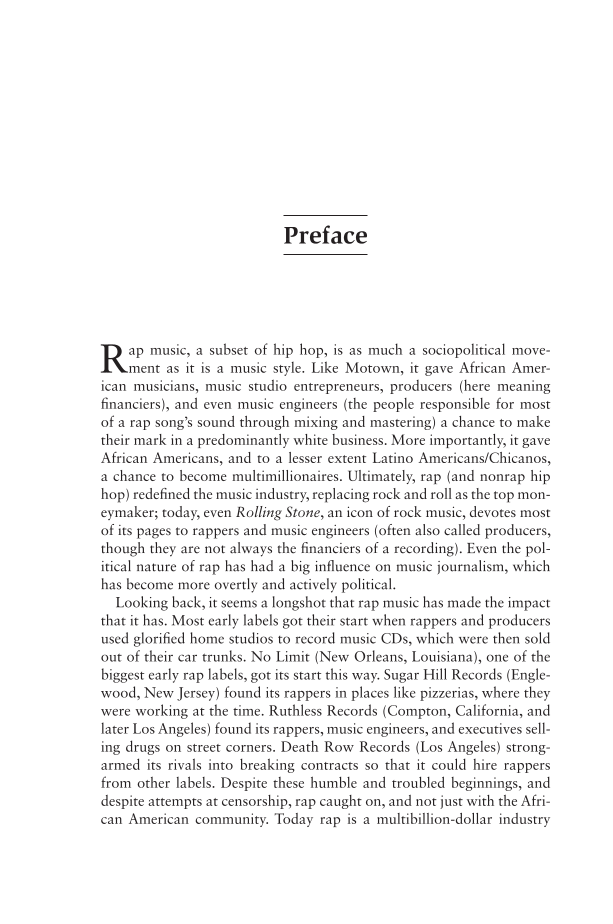Preface Rment ap music, a subset of hip hop, is as much a sociopolitical move- as it is a music style. Like Motown, it gave African Amer- ican musicians, music studio entrepreneurs, producers (here meaning financiers), and even music engineers (the people responsible for most of a rap song’s sound through mixing and mastering) a chance to make their mark in a predominantly white business. More importantly, it gave African Americans, and to a lesser extent Latino Americans/Chicanos, a chance to become multimillionaires. Ultimately, rap (and nonrap hip hop) redefined the music industry, replacing rock and roll as the top mon- eymaker today, even Rolling Stone, an icon of rock music, devotes most of its pages to rappers and music engineers (often also called producers, though they are not always the financiers of a recording). Even the pol- itical nature of rap has had a big influence on music journalism, which has become more overtly and actively political. Looking back, it seems a longshot that rap music has made the impact that it has. Most early labels got their start when rappers and producers used glorified home studios to record music CDs, which were then sold out of their car trunks. No Limit (New Orleans, Louisiana), one of the biggest early rap labels, got its start this way. Sugar Hill Records (Engle- wood, New Jersey) found its rappers in places like pizzerias, where they were working at the time. Ruthless Records (Compton, California, and later Los Angeles) found its rappers, music engineers, and executives sell- ing drugs on street corners. Death Row Records (Los Angeles) strong- armed its rivals into breaking contracts so that it could hire rappers from other labels. Despite these humble and troubled beginnings, and despite attempts at censorship, rap caught on, and not just with the Afri- can American community. Today rap is a multibillion-dollar industry
Document Details My Account Print multiple pages
Print
You have printed 0 times in the last 24 hours.
Your print count will reset on at .
You may print 0 more time(s) before then.
You may print a maximum of 0 pages at a time.










































































































































































































































































